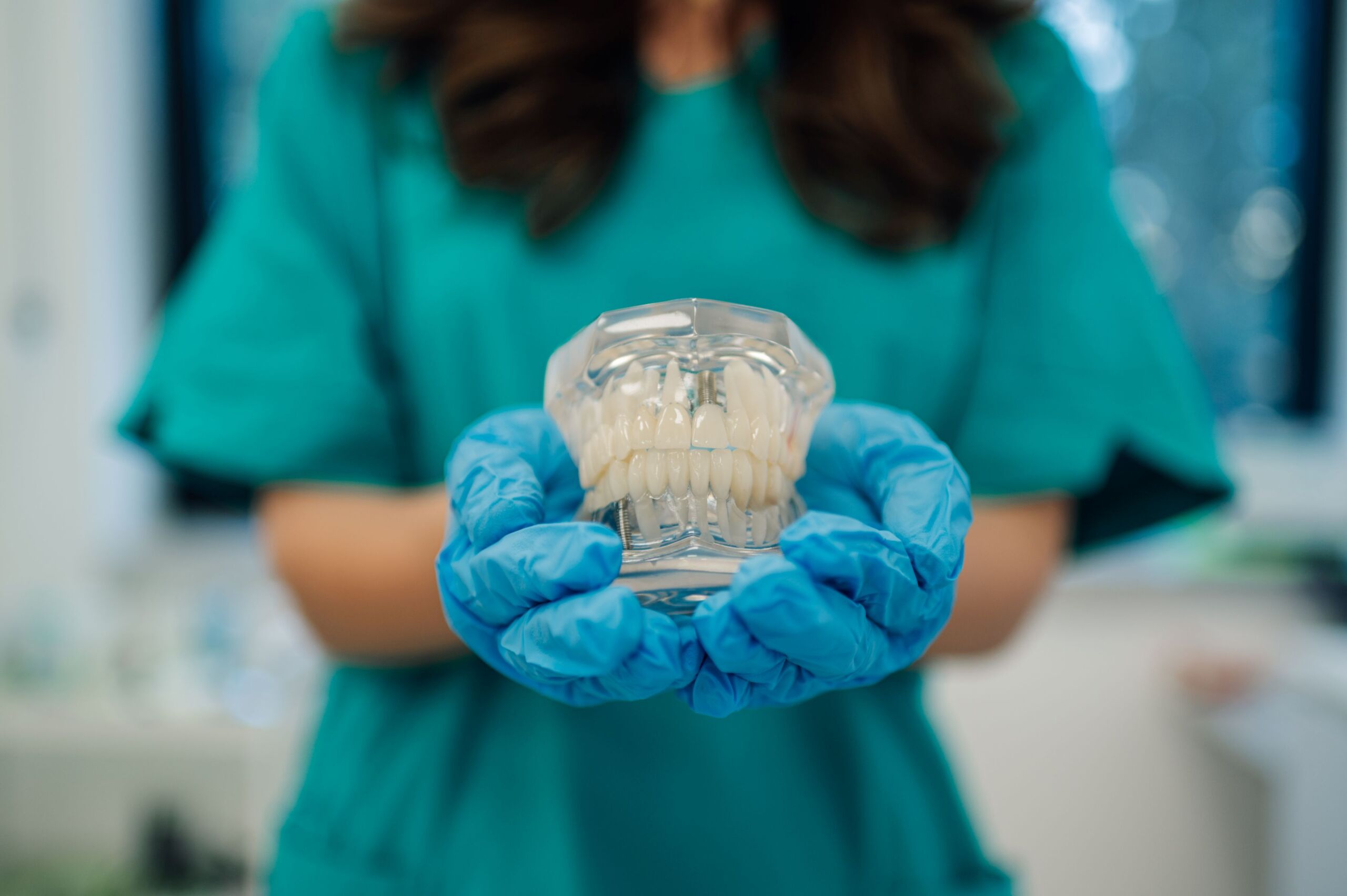A missing tooth changes more than just your smile—it can affect how you chew, speak, and even the way your jawbone ages over time. At Birgul Klinik in Istanbul, we meet people every day who want a solution that feels like a real tooth, not a compromise. A Dental Implant is often that solution: a modern, long-lasting way to replace a tooth (or several) with something that looks natural, feels stable, and works the way you need it to. In the next few minutes, we’ll answer the questions we hear most in consultations and share the practical tips our patients say helped them the most.
What is a Dental Implant?
A Dental Implant acts like an artificial tooth root. Your dentist places a small biocompatible post—usually titanium and sometimes zirconia—into your jaw. After you heal, your dentist attaches an abutment (connector) and secures a custom crown on top. Because the implant fuses with bone, it feels solid when you bite and chew.
Imagine a sturdy wall anchor sinking into solid material—your jawbone grips the implant. Once bone integrates with it, the anchor holds the visible piece, the crown, with reliable strength. If you’re missing several teeth, your dentist can place multiple implants to support a bridge or even a full arch of teeth.
Who Is a Good Candidate for a Dental Implant?
You don’t need perfect teeth to benefit from a Dental Implant—that’s the whole point. Good candidates usually:
- Have one or more missing or non-restorable teeth.
- Maintain reasonable oral health and are willing to address gum issues before surgery.
- Have enough jawbone to support an implant (or are open to bone grafting if needed).
- Can keep up with daily cleaning and routine checkups.
- Don’t smoke, or can pause smoking during healing for the best results.
Medical conditions like controlled diabetes aren’t automatic disqualifiers, but they do need to be factored into your plan. If you grind your teeth, we’ll discuss a nightguard to protect your investment. (General guidance from the NHS)
Dental Implant Options (and When Each Makes Sense)
Single-tooth replacement
Perfect when one tooth is missing. The neighboring teeth remain untouched—unlike a traditional bridge that requires reshaping the teeth on either side.
Implant-supported bridge
If you’re missing several teeth in a row, two or more implants can support a bridge. This reduces cost compared with placing an implant for every single tooth and avoids relying on natural teeth as anchors.
Implant-retained overdenture (snap-on denture)
For people struggling with loose lower dentures, a couple of implants with attachments can transform daily life—more stability for talking and eating, without the full cost of a fixed arch.
Fixed full-arch (often called All-on-4/All-on-6)
A full set of teeth is fixed to 4–6 implants per arch. This is a comprehensive solution when most or all teeth are missing or failing. It’s designed to be removed only by the dentist.
Immediate implant & temporary tooth
In carefully selected cases, an implant and a temporary crown can be placed the same day as extraction, so you don’t leave the clinic with a visible gap. Final restorations come later after full healing.
The Step-by-Step Journey
1) Consultation & planning
We start with a conversation: medical history, goals, and a smile assessment. Digital photos and a 3D CBCT scan let us map bone volume and nerve positions. Your individualized plan covers the implant size, angle, and the final tooth design. This is where we also talk about timeline, costs, and any preparatory care.
2) Preparatory procedures (if needed)
If a tooth needs removal, we may graft bone at the same time to preserve the site for a Dental Implant. In the upper back jaw, a sinus lift might be recommended to create safe height for the implant.
3) Implant placement
The procedure is usually done under local anesthesia, with optional sedation for anxious patients. Thanks to precise planning, placement is typically quick and more comfortable than most people expect.
4) Healing & integration
Over the next few weeks to a few months, the jawbone integrates with the implant surface in a process called osseointegration. During this time, you’ll either wear a temporary tooth or use a removable option so your appearance and function are maintained.
5) Abutment & final restoration
Once the implant is stable, we attach the abutment and take detailed scans for your final crown, bridge, or full-arch prosthesis. The new tooth is color-matched and shaped to blend into your smile and bite.
Dental Implant Recovery: What to Expect
Most people are surprised by how manageable recovery is. Expect mild soreness or swelling for the first 24–72 hours, which responds well to cold compresses and the medications we recommend. Stick to soft foods early on—think soups, yogurt, eggs, smoothies—and avoid very hot, crunchy, or sticky items for a short time. Keep the area clean with gentle brushing, and use any antibacterial rinse only as directed (too much can irritate tissue). We’ll schedule follow-ups to check healing and make sure your bite is comfortable.
A common question: “Will I be walking around with a gap?” In most cases, no. We’ll plan a temporary option so you feel confident while everything heals underneath.
Risks, Safety, and How We Minimize Problems
All surgical treatments carry risks, and a Dental Implant is no exception. Potential issues include infection, delayed healing, or an implant that doesn’t integrate as expected. There’s also the long-term risk of peri-implantitis (inflammation around the implant caused by plaque and other factors).
How we reduce risks at Birgul Klinik:
- Careful case selection and 3D planning to avoid nerves and sinuses.
- Aseptic surgical technique and post-op guidance tailored to you.
- Follow-up visits to catch any early concerns.
- Coaching on daily home care that actually fits your routine.
When something doesn’t go to plan, it’s not the end of the road. Often there are corrective steps—from treating inflammation to replacing a failed implant after proper healing.
Longevity and Success Rates—What’s Realistic?
With excellent home care and regular professional maintenance, a Dental Implant can last many years. The crown on top may need replacement over time (like any dental restoration) due to normal wear. Lifestyle and habits matter: smoking, poor hygiene, and uncontrolled medical issues can shorten lifespan, while routine cleanings, a healthy diet, and a nightguard for grinders tend to extend it.
Here’s the mindset we recommend: think of your implant as a long-term partnership. We build the foundation; you protect it day-to-day. Together, that’s how results last.
Cost, Value, and Financing
It’s fair to ask, “Why is this more expensive than a denture?” A Dental Implant involves surgical placement, advanced imaging, customized lab work, and appointments over several months. Your individual cost depends on:
- Number of implants needed
- Whether bone grafting or sinus lift is required
- The type of final restoration (single crown, bridge, fixed arch, overdenture)
- Materials and complexity of the case
At Birgul Klinik, we provide a transparent, itemized plan so you can see exactly what’s included. We’ll also discuss phased treatment or financing options when appropriate. Our goal is to help you choose the right timing and approach for your health and your budget.
Everyday Care: The Small Habits That Make a Big Difference
Keeping a Dental Implant healthy is very similar to caring for natural teeth—just a bit more deliberate. Use a soft brush twice daily, and clean between teeth with floss or interdental brushes. For full-arch solutions, a water flosser can be a game-changer. If you clench or grind, a custom nightguard protects the implant and your natural teeth. And don’t skip professional cleanings—your hygienist has special tools and training to maintain implants without scratching their surfaces.
Tip we give our busiest patients: put your interdental brushes next to your phone charger. When you plug in at night, you’ll remember that final 60-second clean.
Real-World Scenarios (So You Can Picture the Journey)
- The single front tooth: A cyclist chips a front tooth beyond repair. After extraction and a small graft, we place a Dental Implant and a temporary crown to avoid a visible gap. Months later, the final ceramic crown blends seamlessly with the neighboring teeth—right down to the natural translucency at the edge.
- The bridge upgrade: A patient has a failing three-tooth bridge that’s hard to floss. Two implants let us replace all three teeth without touching the healthy neighbors. Cleaning becomes simpler, and the biting force is shared evenly.
- The full-arch transformation: Years of dental issues leave someone with loose, uncomfortable dentures. A fixed full-arch on 4–6 implants restores confidence and chewing power—apples, salads, and steaks come back on the menu.
FAQs
You’ll be fully numbed, and many patients say implant placement was easier than they expected—often easier than a difficult extraction. Mild post-op soreness is common and manageable.
From start to final tooth, timelines vary depending on bone quality, whether grafting is needed, and the position in the mouth. Some cases are completed in a few months; others take a bit longer for the best long-term stability.
No one should be able to tell. The crown is crafted to match your neighboring teeth in color, shape, and translucency.
You’re not alone. We offer gentle approaches, clear step-by-step communication, and, when suitable, sedation options to keep you comfortable.
No. Materials used in modern implants don’t trigger metal detectors.
When to Choose a Dental Implant vs. Other Options
- Choose an implant when you want a standalone solution that protects jawbone and doesn’t rely on neighboring teeth.
- Consider a bridge if the adjacent teeth already need crowns and your bone is limited in that spot.
- A removable denture can be a budget-friendly interim option, and it can later be stabilized with implants.
We’ll walk you through each path, including pros, cons, and maintenance, so the decision fits your life—not just your mouth.
Your Next Step
If a Dental Implant sounds like the right direction, the most helpful thing you can do is book a consultation and bring your questions—big or small. We’ll review 3D scans together, map out your options, and craft a plan that aligns with your goals, schedule, and budget.
Ready to get started?
Book your consultation with Birgul Klinik (Istanbul). Let’s rebuild your smile with clarity, comfort, and craftsmanship that lasts. Contact us



